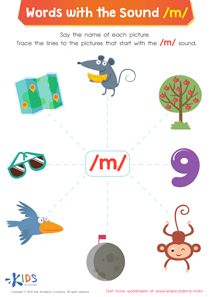Normal Consonant Blends Worksheets for Ages 4-7
5 filtered results
-
From - To
Explore our engaging Normal Consonant Blends Worksheets specifically designed for children aged 4-7! These worksheets are perfect for helping young learners develop their phonics skills and improve reading fluency. Featuring a variety of fun activities, kids will get to practice identifying and blending consonant pairs through interactive exercises. Our resources promote essential early literacy concepts while making learning enjoyable. Each worksheet encourages creativity and enhances fine motor skills, ensuring a well-rounded educational experience. Ideal for parents and educators alike, these worksheets support learning at home or in the classroom. Dive into the dynamic world of consonant blends and watch young readers flourish!


Review the Blends Worksheet


Let's Look for Blends Worksheet


Consonant Blends: "Dr" and "Tr" Printable


L Blends: "Pl", "Cl" and "Sl" Printable


Blending Consonants: "Fl", "Bl" and "Gl" Printable
Understanding normal consonant blends is crucial for children aged 4-7 as it significantly impacts their literacy development. Consonant blends, such as "st," "fr," and "bl," consist of two or more consonants that blend together without losing their individual sounds. Encouraging familiarity with these blends helps young learners improve their phonemic awareness, which is foundational for reading and writing.
When children become proficient in recognizing and pronouncing consonant blends, they can decode words more efficiently, enhancing their reading fluency. This competence directly correlates with better comprehension skills, paving the way for a positive reading experience and fostering a love for books. Understanding blends also assists in spelling, as many common words contain these combinations.
For parents and teachers, emphasizing consonant blends in early education can build confidence in children’s language skills. This, in turn, motivates them to engage more deeply in their learning journey. By focusing on consonant blends, adults are not just aiding in literacy; they are also contributing to broader cognitive development, helping children make connections between sounds and letters, leading to successful communication skills that last a lifetime. Engaging in playful activities centered on blends can make learning joyful and effectively support this essential phase of development.
 Assign to My Students
Assign to My Students
















